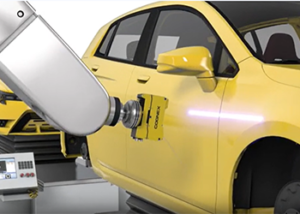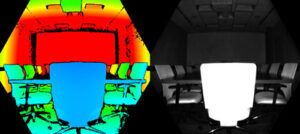3D TOF Cameras
What is a TOF camera and how does it work? Applications in the industrial sector.
What is a TOF camera and how does it work?
TOF cameras or Time Of Flight cameras are 3D cameras that, as their name suggests, calculate the time it takes for light to reach the object and return to the camera’s sensor.
But in reality, this is not exactly the case, TOF cameras do not calculate the time it takes for the light, but measure the wavelength difference between the light they emit and the light they receive.
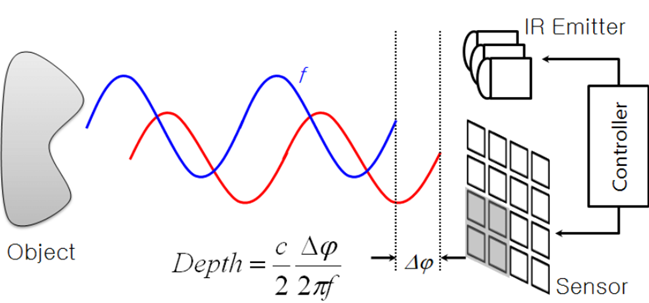
As we can see in the image above, the light emitted is modulated and according to the formula described, the wave phase shift can be calculated and with it we can know the distance to the object.
The technology used by TOF cameras has a number of advantages and disadvantages compared to 3D pattern projection or laser triangulation cameras.
What is the main advantage of TOF cameras?
The main advantage of a TOF camera over 3D pattern projection or laser triangulation cameras is its speed. We currently find TOF cameras that allow 3D images to be obtained at 100 images per second.
In which industry are TOF cameras used?
Because of this characteristic, speed, TOF cameras are widely used in the automotive industry. The main application for TOF cameras is the driving assistant in automobiles, the use of this technology allows decisions to be made in milliseconds.
Main drawback of TOF cameras?
Among the main drawbacks of TOF cameras is their accuracy.
The accuracy of a TOF camera ranges from a few millimeters to almost a centimeter. The following table shows examples of the accuracy of the HELIOS 2+ camera from Lucid VISION LABS.

Applications in the industrial sector
Until a few years ago, TOF cameras were mainly used for vehicle guidance, as mentioned above, and they have also been widely used in recent years in the entertainment sector.
The best known case is Microsoft’s Natal project. Microsoft implemented a few years ago in the Xbox 360 console a controllerless user interface based on body movements. This gave rise to the well-known Kinect system that allowed the implementation of an RGB camera plus a TOF camera to be able to play using oneself as the game controller.
The illustration below shows an example depth map (left) and the clean IR image (right) from an Azure Kinect camera.

Microsoft became interested in this technology in the early 2000s and successfully introduced it to the entertainment sector in 2009. The great impact it had made us think that this technology would evolve very quickly, but on the contrary, it was so focused on the vehicle guidance sector and on large-scale consumption that its use at industrial level stagnated, causing TOF camera technology to lose a decade of development within the industrial sector.
Fortunately, at present, systems are coming out that are very focused on the applications and needs of the industrial sector, providing us with low-cost 3D TOF cameras with many possibilities.
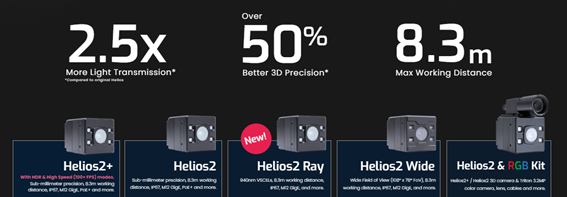
In typical industrial applications, thanks to their low cost and the fact that they can work on the move, TOF cameras are being used in bin picking applications where picking precision is not required.
Examples of this can be the picking of bags or boxes where TOF cameras are a very competitive option.
On the other hand, TOF cameras can be found in volumetric calculation applications for both small objects and large surfaces, since they allow us to work in fields of vision of more than 8 x 5 meters.
The latest developments in TOF cameras work with 940 nm IR illumination systems that allow excellent results in outdoor conditions.
These latest advances open up a whole range of possibilities to improve outdoor guidance and picking, which can be very interesting in the agricultural sector, one of the sectors that will be most automated in the coming years.
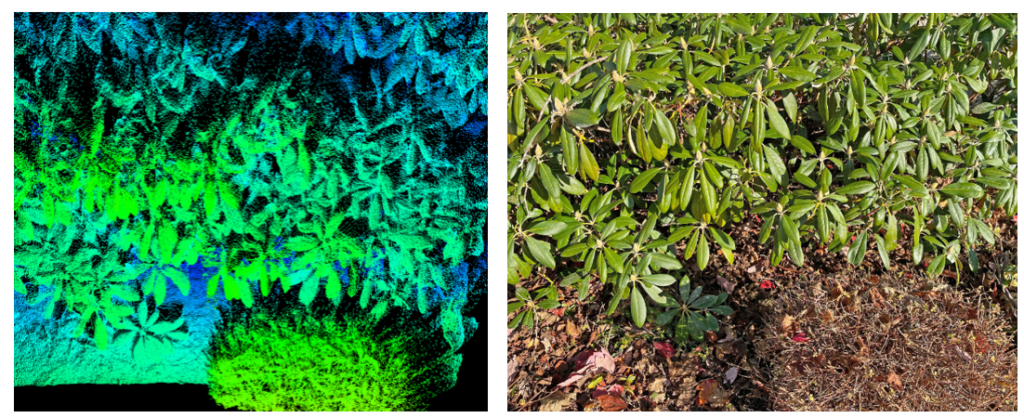
If you want to know more about machine vision follow us on Bcnvision LinkedIn and Bcnvision Morocco Linkedin and visit our website bcnvision.com
Article written by Oriol Verdú, Technical Office & Product Manager


